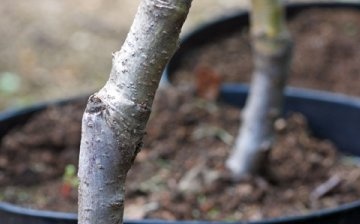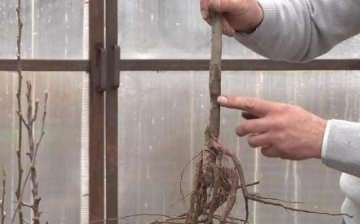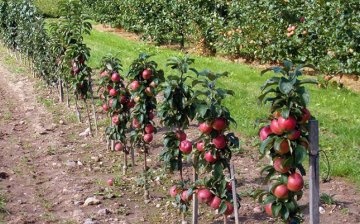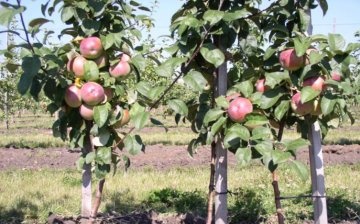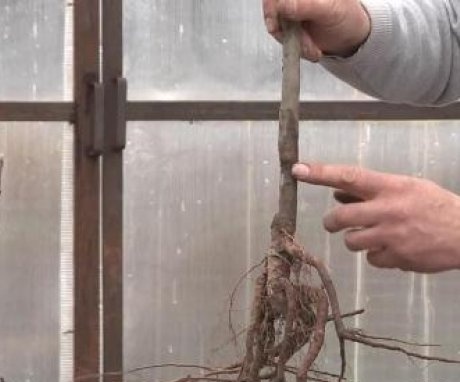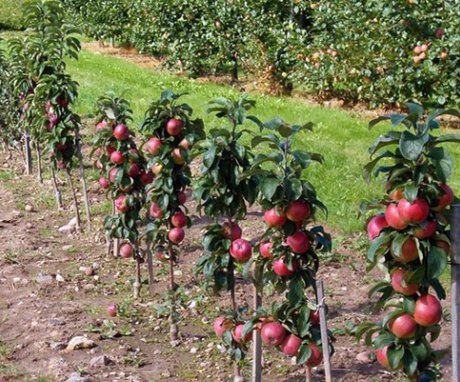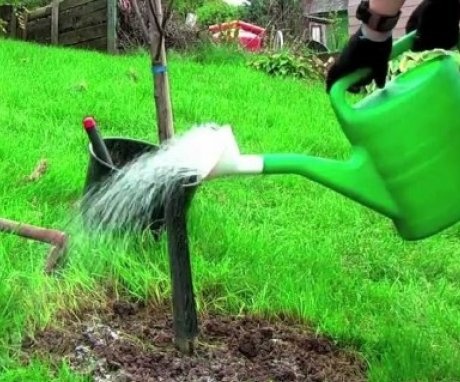Growing a sturdy apple stock and care tips
A stock is a plant to which a bud or a stalk of another plant or variety that is needed is grown. to inoculate... The rootstock is the place from the roots together with the stem to the place where the cutting is grafted. This part of the plant is very important. Its value is great precisely for a fruit tree, since it is under the influence of the rootstock that the growth rate, the time of fruiting, durability, resistance to drought and frost, the amount harvest... It depends on the stock whether the plant will be demanding on the soil, resistant to various diseases and harmful insects.
Content
Seed stock
A seed stock is a fairly tall stock made of seed wild apple tree or apple trees varieties Antonovka. This type of rootstock is well compatible with any kind of apple tree.
The seed stock provides strong roots that go deep into the ground.
No trimming Apple tree can reach 7 meters in height and live over 70 years. The plant is resistant to bad external conditions, not demanding on the ground and will not dry out without regular watering, no support is needed. Unfortunately, such a tree will begin to bear fruit late, the fruits will appear only in the 7th year. Due to their large size, trees are inconvenient to look after. From any tree to the apple tree, at least 5 meters should remain on the seed stock. Only after the correct trimming and crown formation the growth of the apple tree can stop at 4 meters.
There are two types of rootstocks:
- Seed
- Vegetatively propagated or clonal
If you grow a rootstock from seeds in the traditional way, then you will not be able to immediately graft a stalk to it. Inoculation of such rootstocks can be performed only in the second year. Still, you can get good plants that will tolerate grafting hErenkov already within the first year. To do this, artificially lengthen the growing period of fruit seedlings. How can this be done? To grow a good stock for an apple tree, you need it in the fall stratify seeds.
There are only two ways to grow the stock itself:
- Growing in containers
- Sowing in open ground
Clonal rootstock
Clonal rootstocks can be divided into two groups:
- Dwarf;
- Semi-dwarf.
These types of rootstocks have certain advantages. Trees enter the fruiting period early, with time harvest it only gets bigger and bigger. This quality received the title of "early maturity". A good harvest can be harvested as early as 3 years after planting. There are times when summer residents themselves have to pick flowers from seedlings grafted onto dwarf rootstocks, which are not even a year old.
You have to pick off the inflorescences so that small plants do not lose vitality while growing fruits. Within 3 years, the plant grows stronger, its main branches are strengthened, leaves and roots develop. Small trees are easier to care for and easier to harvest. From dwarf and semi-dwarf trees, a person can pick fruits while standing on the ground. There is no need to use the ladder. Fighting diseases and harmful insects is also easier.
Dwarf plants include apple trees that reach a height of no more than 3 meters, and semi-dwarf plants do not reach a height of more than 5 meters.
For summer cottages, small trees are best suited, which can be grown on semi-dwarf and dwarf rootstocks.
Here are some more benefits of cloned rootstocks:
- Yield they are higher than that of ordinary trees. Small trees can produce fewer fruits than large ones, but mini-apple trees can be placed closer together to increase the yield.
- The harvest is better in terms of quality. Apples from the trees. which are grafted on low-growing rootstocks of higher quality. The fruits are large, bright, and the nutrient content in them is increased.
- Growing such plants is much more economical. Labor costs for growing one kilogram of apples are much lower.
- Thanks to dwarf plants, you can significantly diversify the garden with varieties. Many summer residents want to have several varieties on the same territory, small trees will help to carry out this venture.
- Mini apple trees can be grown in the form of a variety of shapes - cones, pyramids, and so on. This will give the summer cottage a decorative effect, help to decorate your favorite corner beautifully.
What are the disadvantages of dwarf trees:
- The main disadvantage is the placement of roots close to the surface of the ground, the root system is asymmetric and can easily break.
- Sometimes it is because of this property that dwarf trees need props.
- The roots suffer greatly, since the uppermost layer dries most strongly in hot weather, and frost affects it especially hard.
- Be prepared, if you want to create a mini-garden of apple trees, that these trees need more careful care.
Stock care
The care is quite simple. It is only necessary to water the plant from time to time and feed it twice a year. Top dressing can serve as a solution mullein or ammonium nitrate.
The best place to grow apple rootstock is in a cool but well-lit room. You can use window sills or glazed loggias on the south side for these purposes.
Start hardening the seedlings ten days before planting.
Open the window on the balcony or loggia for several hours, and six days before transplants in the soil, the seedling can be taken out into the open air. You can plant a sprout in a permanent place immediately. Just do not forget to pour water on them, so they are more conveniently removed from the containers. Immediately after planting, the plants also need to be watered and mulched.
If you grow rootstocks for apple trees in this way, then by the end of summer they will become beautiful developed trees. The trunk will reach such a thickness that it will be possible to inoculate the buds onto the stock.
Planting a dwarf apple tree
Remember that the vaccination site stalk must be located above the soil surface, since otherwise the litter will transfer to its roots, the variety will cease to be dwarf.
Planting tips:
- It is characteristic of a seedling that the roots are shallow, so try to distribute them evenly in a circle so that they do not bend or protrude to the surface.
- The soil should be very tight to the roots, there should not be empty spaces. To do this, every time you throw a portion of the earth into the hole, tap it lightly with your foot.
- Tighten more at the edge rather than the center.
- Drive in the stake and place the seedling on the north side of the peg. This will protect it from burns.
- Dig a hole around the seedling, fill it with water and cover the soil with peat to retain moisture. Even in the rain, the plant needs watering.
- Do not put the small rootstock insert into the soil as it may start to rot.
Be sure to install some kind of support. It is better to do this immediately when landing... Trees can fall due to both weather conditions and heavy fruits. Place a small stake or pipe about 15 centimeters from the tree and tie the trunk to it.
More information can be found in the video.



